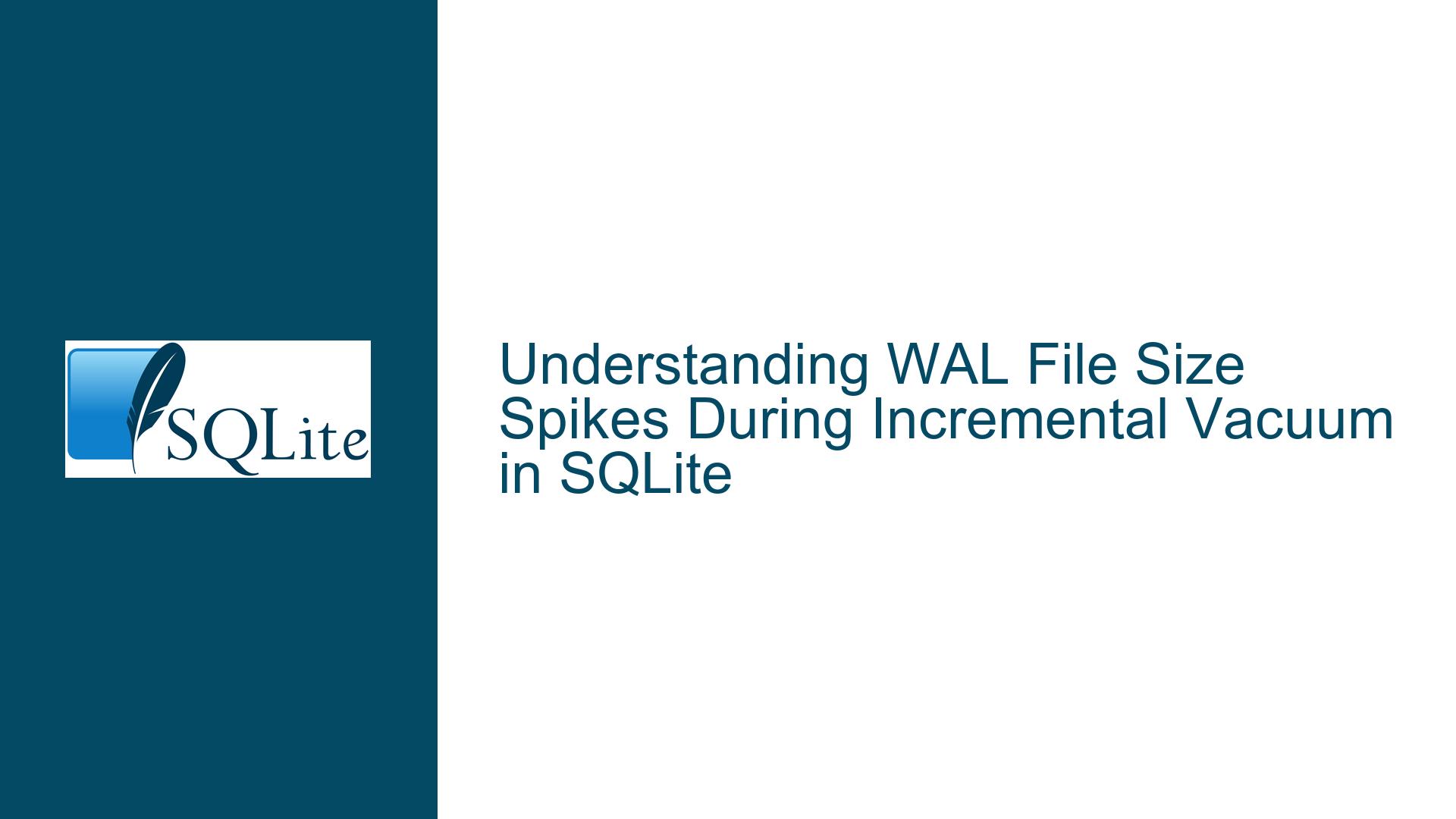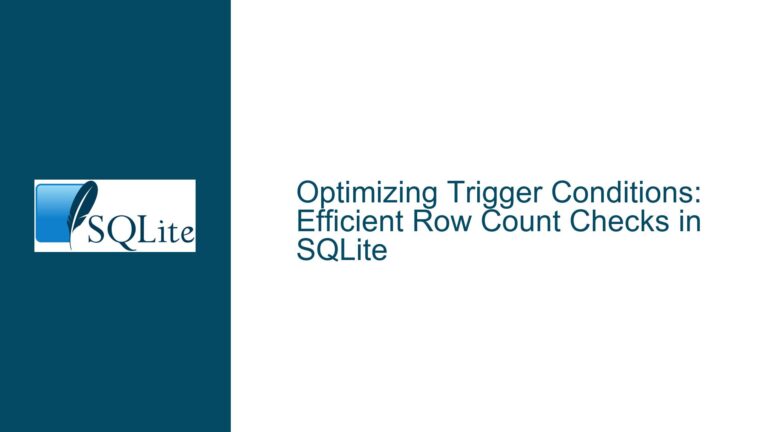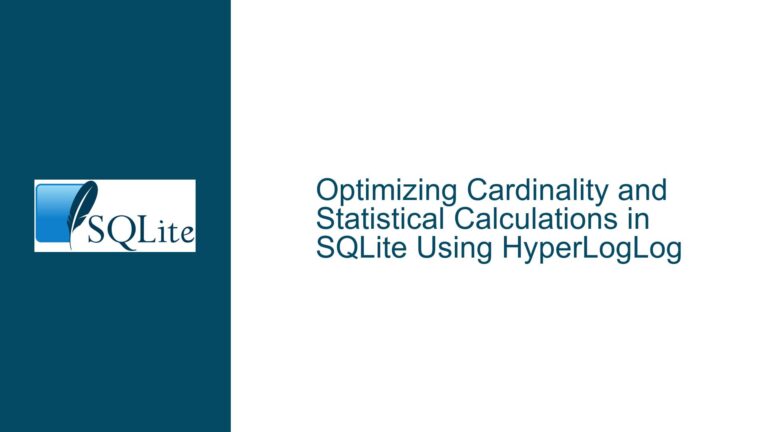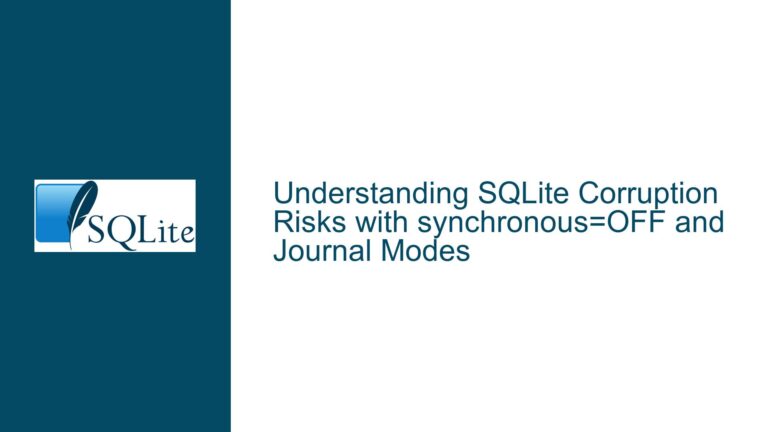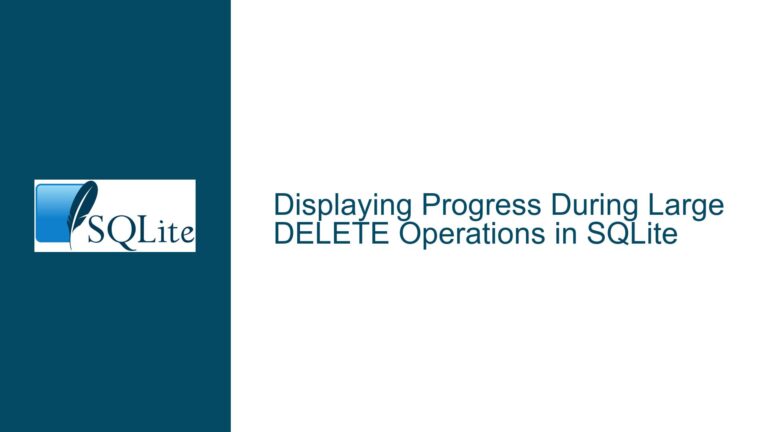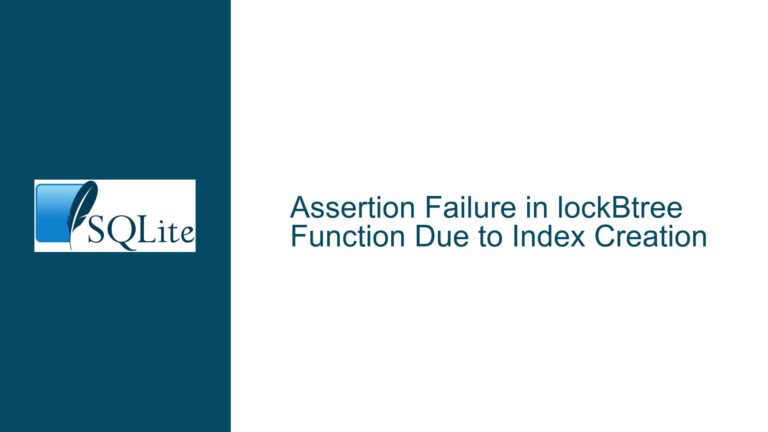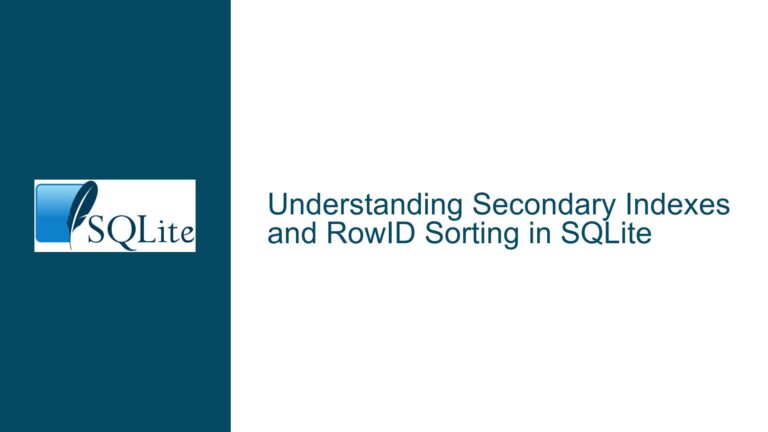WAL File Size Spikes During Incremental Vacuum in SQLite
Incremental Vacuum and WAL File Size Behavior in SQLite
When performing an incremental vacuum operation in SQLite, particularly in databases configured with Write-Ahead Logging (WAL) mode, a peculiar behavior can be observed regarding the size of the WAL file. Specifically, a single large incremental vacuum operation can result in a significantly larger number of pages being written to the WAL file compared to performing multiple smaller incremental vacuum operations that remove the same total number of free pages. This behavior is counterintuitive, as one might expect the total WAL file size to be similar regardless of whether the vacuum operation is performed in one large step or multiple smaller steps.
The issue becomes apparent when profiling the WAL file size during these operations. For instance, in a scenario where a database is populated with 100 rows of 1 MB data and then subsequently deleted, the database will have a large number of free pages. When a single incremental_vacuum operation is executed to remove all these free pages, the WAL file size spikes dramatically, with tens of thousands of pages being written to the WAL. However, when the same number of free pages are removed through multiple smaller incremental_vacuum(N) operations, the total number of pages written to the WAL is significantly lower.
This behavior is not immediately obvious and can lead to performance issues, especially in systems where WAL file size is a critical factor. Understanding the underlying causes of this behavior is essential for optimizing database performance and ensuring efficient use of resources.
Page Cache Overflow During Large Incremental Vacuum Operations
The root cause of the WAL file size spike during a large incremental vacuum operation lies in how SQLite manages its page cache during the vacuum process. When SQLite performs an incremental vacuum, it marks each free page that is removed from the end of the file as "dirty." These dirty pages are then written to the WAL file as part of the transaction. However, SQLite is optimized to avoid writing pages to the WAL that will be truncated away at the end of the transaction. This optimization works well when the page cache does not overflow during the vacuum operation.
The problem arises when the page cache fills up midway through a large incremental vacuum operation. When the cache overflows, SQLite is forced to flush dirty pages to the WAL file to make room for new pages. This flushing occurs even for pages that would eventually be truncated away at the end of the transaction. As a result, a large number of unnecessary pages are written to the WAL file, leading to the observed spike in WAL file size.
In contrast, when performing multiple smaller incremental vacuum operations, the page cache is less likely to overflow. Each small vacuum operation processes a limited number of pages, and the cache can handle the load without needing to flush dirty pages prematurely. This results in fewer pages being written to the WAL file, as SQLite can take advantage of its optimization to avoid writing pages that will be truncated.
The relationship between the page cache size and the WAL file size during incremental vacuum operations is critical. A larger page cache can mitigate the issue by providing enough space to hold all the dirty pages until the end of the transaction, allowing SQLite to avoid writing unnecessary pages to the WAL. However, this is not always feasible, especially in environments with limited memory resources.
Optimizing Incremental Vacuum to Minimize WAL File Size
To address the issue of WAL file size spikes during incremental vacuum operations, several strategies can be employed. The most straightforward approach is to increase the page cache size using the PRAGMA cache_size command. By setting a larger cache size, SQLite can hold more dirty pages in memory, reducing the likelihood of cache overflow and the subsequent need to flush pages to the WAL file prematurely. This approach has been shown to be effective in reducing the number of pages written to the WAL during large incremental vacuum operations.
For example, setting the cache size to 30,000 pages (as suggested in the discussion) can significantly reduce the number of pages written to the WAL during a large incremental vacuum. This is because the larger cache size allows SQLite to hold all the dirty pages until the end of the transaction, at which point it can truncate them without writing them to the WAL.
Another approach is to break down large incremental vacuum operations into smaller, more manageable chunks. By performing multiple smaller incremental vacuum operations, the page cache is less likely to overflow, and SQLite can take advantage of its optimization to avoid writing unnecessary pages to the WAL. This approach is particularly useful in environments where increasing the cache size is not feasible due to memory constraints.
In addition to these strategies, it is important to monitor the WAL file size and the number of pages written to the WAL during vacuum operations. This can be done using the PRAGMA wal_checkpoint command, which provides information about the number of pages written to the WAL and the number of pages moved to the database. By monitoring these metrics, database administrators can identify when WAL file size spikes occur and take appropriate action to mitigate the issue.
Finally, it is worth noting that this behavior represents an optimization opportunity for SQLite. In cases where pages are marked as dirty but will be truncated away at the end of the transaction, SQLite could avoid marking these pages as dirty in the first place. This would prevent the unnecessary writing of pages to the WAL file and reduce the overall WAL file size during incremental vacuum operations. While this optimization is not currently implemented, it is something that could be considered in future versions of SQLite.
In conclusion, the behavior of WAL file size during incremental vacuum operations in SQLite is influenced by the interaction between the page cache and the vacuum process. By understanding this interaction and employing strategies such as increasing the cache size or breaking down large vacuum operations into smaller chunks, database administrators can minimize the impact on WAL file size and optimize database performance. Monitoring WAL file size and the number of pages written to the WAL during vacuum operations is also essential for identifying and addressing potential issues.
